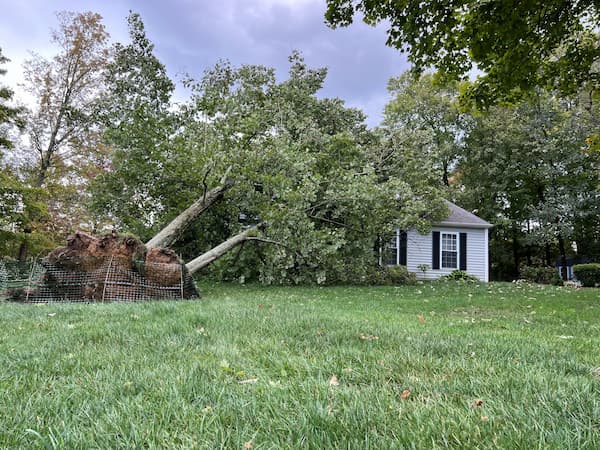SCARY TREES
Are there scary trees lurking around your or your neighbor’s property? There may be numerous hazardous tree situations that you, as a homeowner, are unaware of because the trees appear relatively healthy with a canopy full of green foliage. Many tree or branch failures result from external and sometimes internally hidden structural defects that occur naturally as the tree grows. Other defects arise from improper or over-pruning. The most common hazard trees are those that are declining and have decayed or dead limbs deep within a canopy of healthy leaves. And lastly, and the scariest are the trees that have hidden decay in the trunk just below the soil line. This decay destroys the integrity of the large roots that extend from the basal flare of the tree’s trunk and anchor the tree deep into the soil. During extreme wind events, entire trees with their root balls attach may topple because of compromised or decayed roots.
How can homeowners identify problematic or hazardous trees? Not all tree defects are visible to the untrained person. A homeowner should consult with a trained and certified arborist for a complete assessment of any worrisome trees.
An arborist may do the following:
- Look for dead or dying branches with discolored or missing foliage.
- Point out any broken or damaged branches.
- Identify weakly attached branches or codominant stems.
- Check for cracks along branches or in the trunk.
- Examine the base of the tree’s trunk for visible root defects.
- Evaluate the overall structure of the tree.
- Investigate questionable areas of the tree to locate any potential decayed wood.
How can homeowners protect their property and themselves from potential harm caused by a neighbor’s hazardous tree?
The International Society of Arboriculture provides a database of qualified arborists which can be accessed by the public. Many of these arborists have advanced training and certifications in tree risk assessment. A tree risk assessment qualified (TRAQ) arborist utilizes specialized equipment and protocols to provide determinations and predictions of a tree’s likelihood to fail and cause damage.
Spotting Danger: How to Identify & Assess Hazard Trees – Alabama Cooperative Extension System

